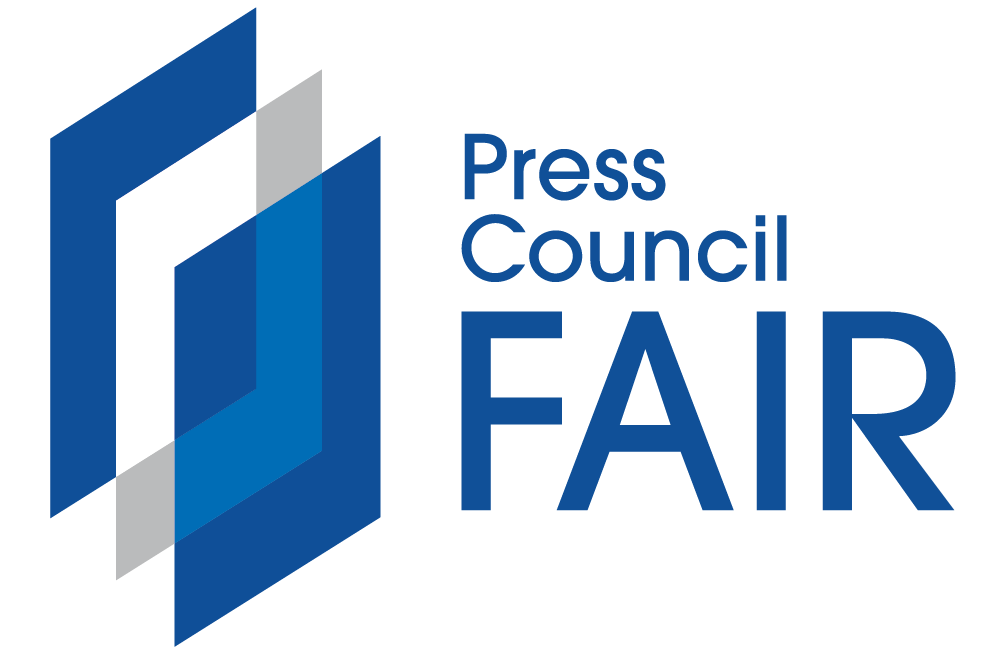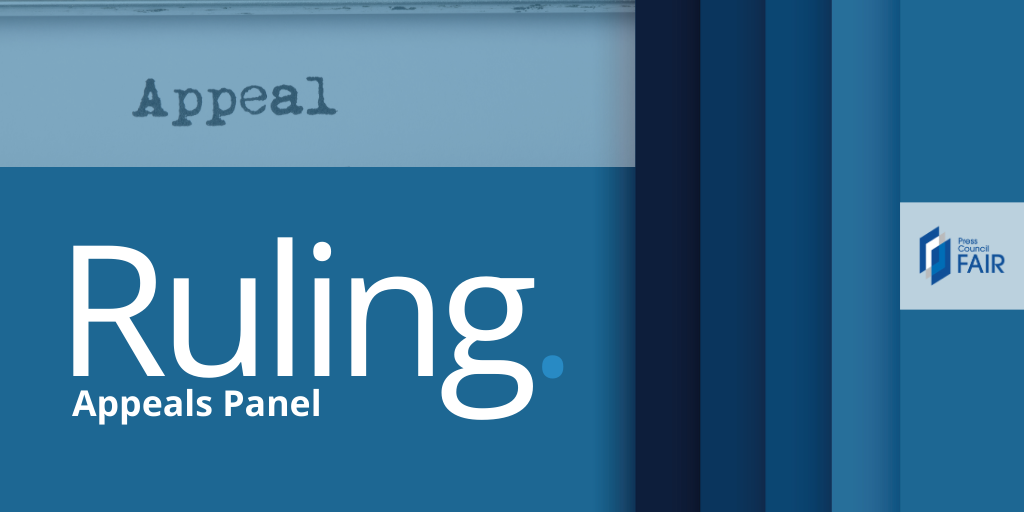MMA Child Media Monitors vs. Daily Sun
SUMMARY
The headlines to the stories in dispute read, 100 lashes! Horror attack with sjambok after woman accuses teen of trying to date her man! Video: How cruel woman beat schoolgirl!; and, My life of pain since that lashing! Nompilo (15) relives video beating horror! (published on 9 and 10 October 2013 respectively).
This ruling by Press Ombud Johan Retief was based on the Press Code that was in effect before 30 September 2022.
The first story reported that a woman who had accused a schoolgirl (Nompilo Vilakazi) of dating her boyfriend invited her to her house – and then hit her more than 100 times with a sjambok. The story went with four pictures. The second one was a follow-up story, and it contained a large picture of Nompilo.
Media Monitoring Africa (MMA) Child Media Monitors (CMM) complained that the newspaper had violated the young girl’s privacy and dignity by identifying her, and that it did not exercise enough care and consideration in its reporting on this girl who was a witness, a victim and a minor.
Retief dismissed the complaint, mainly because:
- the girl’s grandmother gave the newspaper permission to identify the girl – he rejected the CMM’s claim that the grandmother was not “in her right mind”, for “how did they know that?”; and
- it was not in the first instance up to a newspaper to decide if publication was in the child’s best interests – the first and most important decision in this regard came from the parent/custodian.
THE RULING ITSELF
This ruling is based on the written submissions of Media Monitoring Africa (MMA) Child Media Monitors (CMM), and Jeremy Gordin, editor of the Daily Sun newspaper.
Complaint
CMM (from Parkhurst, Troyville, Park Senior and Natura Primary schools) complains about two front page stories that appeared in the Daily Sun on 9 and 10 October 2013. The first story was headlined 100 lashes! Horror attack with sjambok after woman accuses teen of trying to date her man! Video: How cruel woman beat schoolgirl! The second one read: My life of pain since that lashing! Nompilo (15) relives video beating horror!
CMM complains that the newspaper violated the young girl’s privacy and dignity by identifying her, and that it did not exercise enough care and consideration in its reporting on this (abused) minor.
The texts, pictures
The first story reported that a woman who had accused a schoolgirl (Nompilo Vilakazi) of dating her boyfriend invited her to her house – and then hit her more than 100 times with a sjambok. The story went with four pictures.
The second one was a follow-up story, and it contained a large picture of Nompilo.
Arguments by the parties
CMM complains that the newspaper should not have identified the girl as she was a witness, a victim and a minor. They argue that her rights to privacy and dignity were violated, which had been in breach of Sections 4.1, 8.1 and 8.3 of the Press Code.
They also say that the reporting would have affected the child negatively in many ways, and state that the pictures “did not help to tell the story better”. This was in breach of Section 9 of the Code, they argue.
CMM concludes that the fact that Nompilo was identified was not in her best interests, and add: “It was (also) not in the public interest to know her name and show her face in the paper.”
The editor starts his response by asking: “In short, what we do is not a game; it is not a frippery, just as your work is not a game. This being the case, might it not be considered a trifle ludicrous, not to mention insulting and even demeaning, to have forwarded to us complaints allegedly formulated by a group of primary school children?”
He then elaborates quite extensively on his displeasure regarding this matter.
On the complaint itself, Gordin admits that the newspaper has compromised Nompilo’s right to privacy and dignity. However, he argues that:
- what happened to her was “one of the most shocking recorded things that could have happened to a young woman”;
- the social context should be kept in mind (there is a recorded trend that poor young women date older men – so-called sugar daddies);
- subsequent to the thrashing, the police somehow persuaded Nompilo’s grandmother into dropping charges against the perpetrator – “and…were it not for us, the charges would remain dropped”;
- the girl’s grandmother gave them permission to interview and photograph the girl; and
- it was in the public interest that this horror be exposed – which in this case outweighed the negative effect the reporting may have had on the minor.
He concludes: “In short, it was too late to be talking about the ‘best interests’ of the child – these had…already been violated by the perpetrator and the circumstances and the DS was not going to ameliorate anything by hiding details or Nompilo’s identity.”
CMM mainly disagrees with the newspaper’s arguments. They say that the justification that the grandmother gave permission for the interview and the taking of the pictures was insufficient – even if she agreed for Nompilo to be identified, “she was not in her right mind to do so because she was traumatized and [the newspaper] said she was in hospital which means she might have been under [the influence of] drugs”.
They also argue that the newspaper should have blurred Nompilo’s face. “Good ends cannot justify bad means. There are ways that the Daily Sun could have told the story without violating any of the child’s rights, one of the being, protecting her identity.”
CMM concludes that, if Nompilo’s rights had already been infringed, the newspaper should not have violated them even further.
Analysis
Firstly, I do not share the newspaper’s disdain about children having lodged a complaint with this office, as there is no age limit in this regard. We take every complaint seriously, irrespective of the age of the complainant. Unless the complaint is fraudulent, frivolous, malicious or vexatious (Section 1.5.2 of the Complaints Procedures), it is the reporting that is under scrutiny and not the complainant.
The following Sections of the Press Code have been quoted and are relevant in this instance:
- 4.1: “The press shall exercise care and consideration in matters involving the private lives and concerns of individuals. The right to privacy may be overridden by a legitimate public interest”;
- 8, leading on to 8.1: “Section 28.2 of the Bill of Rights in the South African Constitution states: ‘A child’s best interests are of paramount importance in every matter concerning the child.’ The press shall therefore exercise exceptional care and consideration when reporting about children under the age of 18. If there is any chance that coverage might cause harm of any kind to a child, he or she shall not be interviewed, photographed or identified unless a custodial parent or similarly responsible adult consents, or a public interest is evident”;
- 8.3: “The press shall [therefore] not identify children who have been victims of abuse [or] exploitation, unless a public interest is evident and it is in the best interests of the child”; and
- 9: “Due care and responsibility shall be exercised by the press with regard to the presentation of brutality, violence and suffering.”
The following issues are more important than others:
- The grandmother’s permission;
- Public interest; and
- The best interests of the child.
I find CMM’s justification for its argument against the grandmother’s permission rather odd, and even demeaning towards her. How was CMM to know that she was not “in her right mind”? That is a rather harsh judgment – especially when the complainants were in all probability not present and therefore in no position to come to such a conclusion.
Also: It is not in the first instance up to a newspaper to decide if publication is in the child’s best interests or not (8.3) – the first and most important decision in this regard comes from the parent/custodian. If the latter gives permission to publish, this office has to accept that that person has acted in the child’s best interests (unless there are clear indications to the contrary) – and it follows that a publication may do the same.
On public interest: The dispute is not if the matter itself was in the public interest or not, it is merely the identification of the minor that is in contention.
This particular issue should not be seen in isolation, but rather in conjunction with the permission that the custodian gave as stated above. If the grandmother did not give her consent and the newspaper decided on its own that the matter was to such an extent in the public interest that it needed to identify the child, it may well have been a different matter. In this case, though, the grandmother did consent, presumably because it was (at least to her mind) in her grandchild’s best interests.
Moreover: I accept Daily Sun’s word about the continuation of the charges against the perpetrator due to its reportage (CMM did not contest this matter); I therefore submit that, if the coverage helped to bring the perpetrator to book, surely that was in Nompilo’s interest.
Finding
The complaint is dismissed.
Appeal
Our Complaints Procedures lay down that within seven working days of receipt of this decision, either party may apply for leave to appeal to the Chairperson of the SA Press Adjudication Panel, Judge Bernard Ngoepe, fully setting out the grounds of appeal. He can be contacted at [email protected].
Johan Retief
Press Ombudsman


